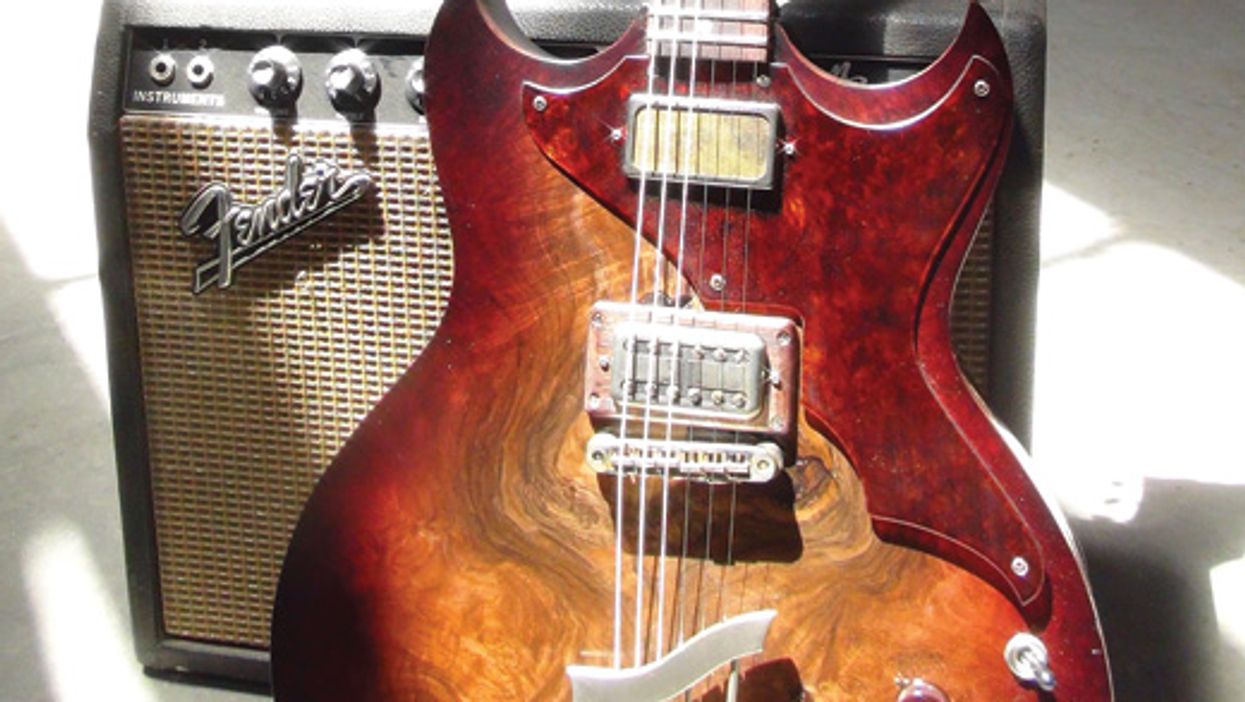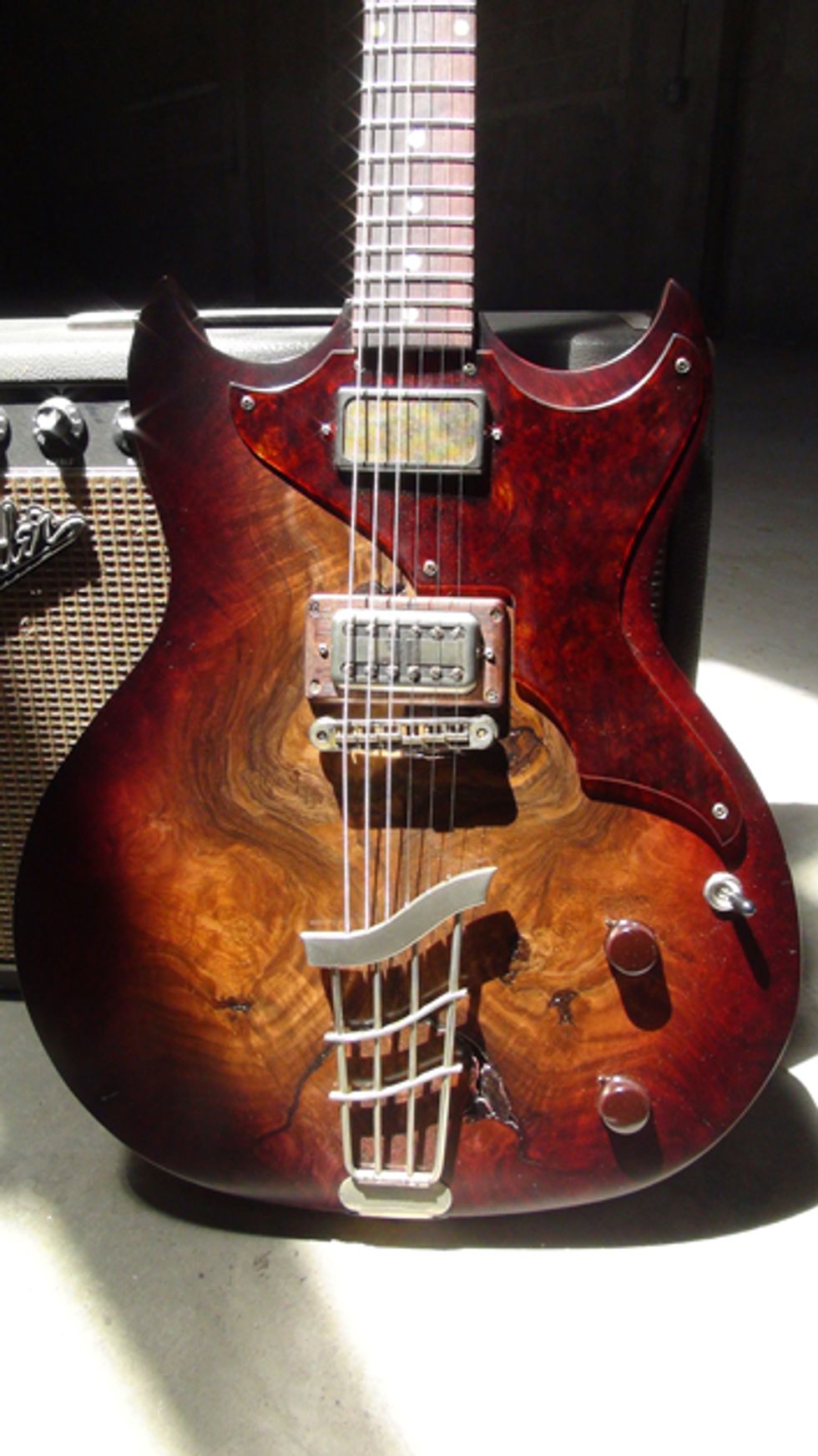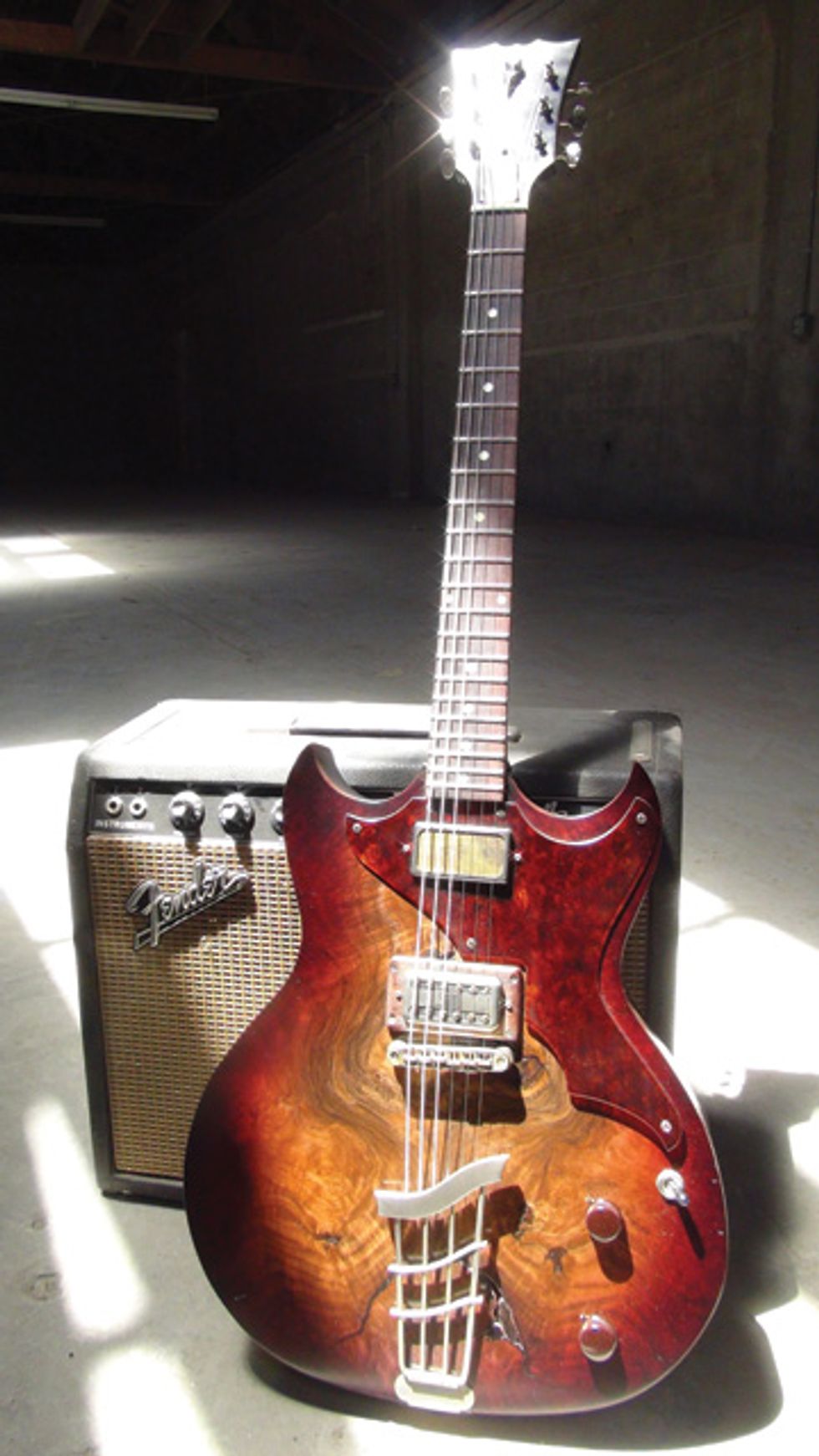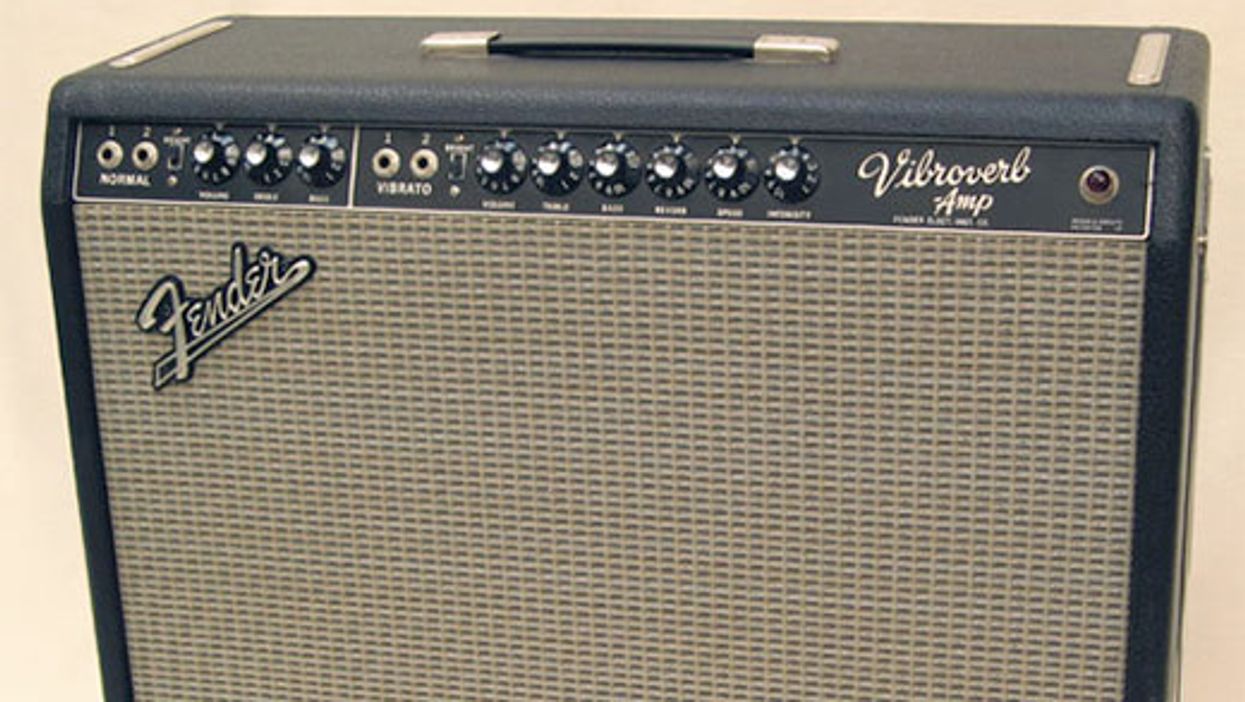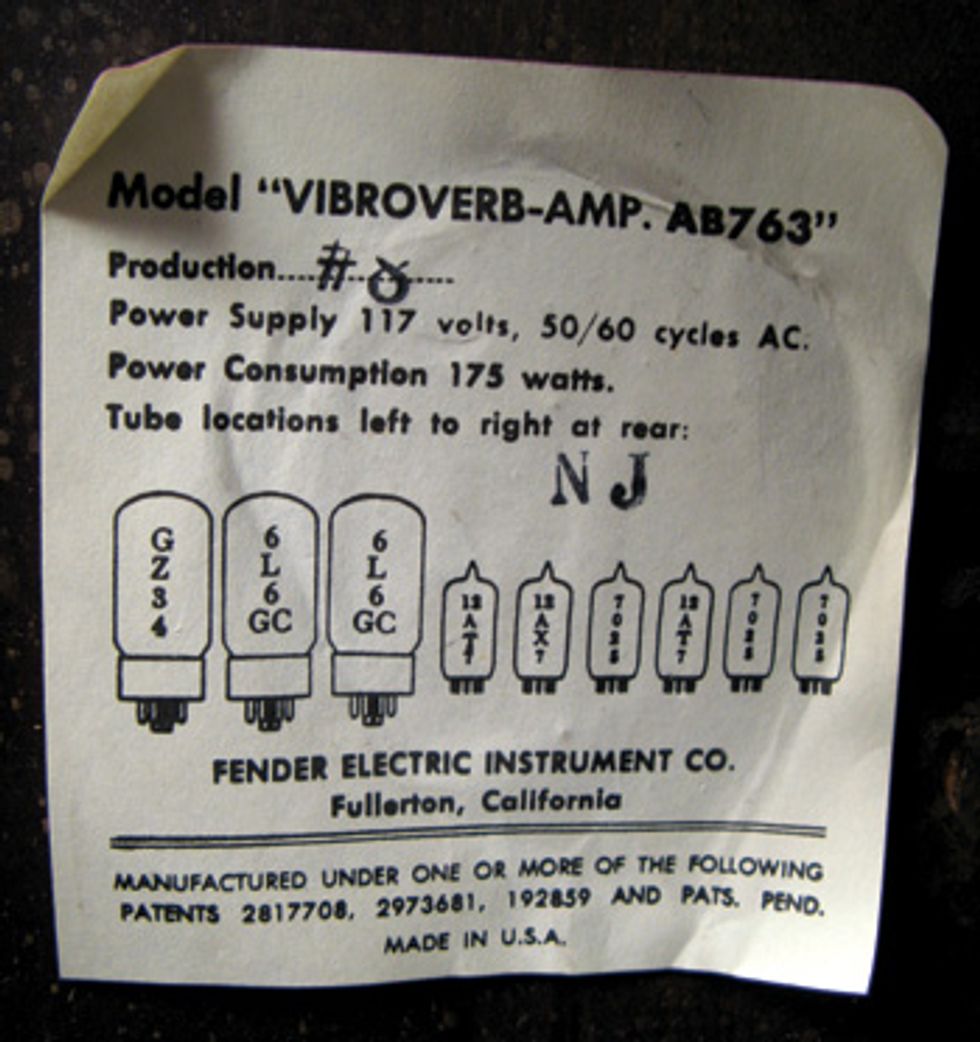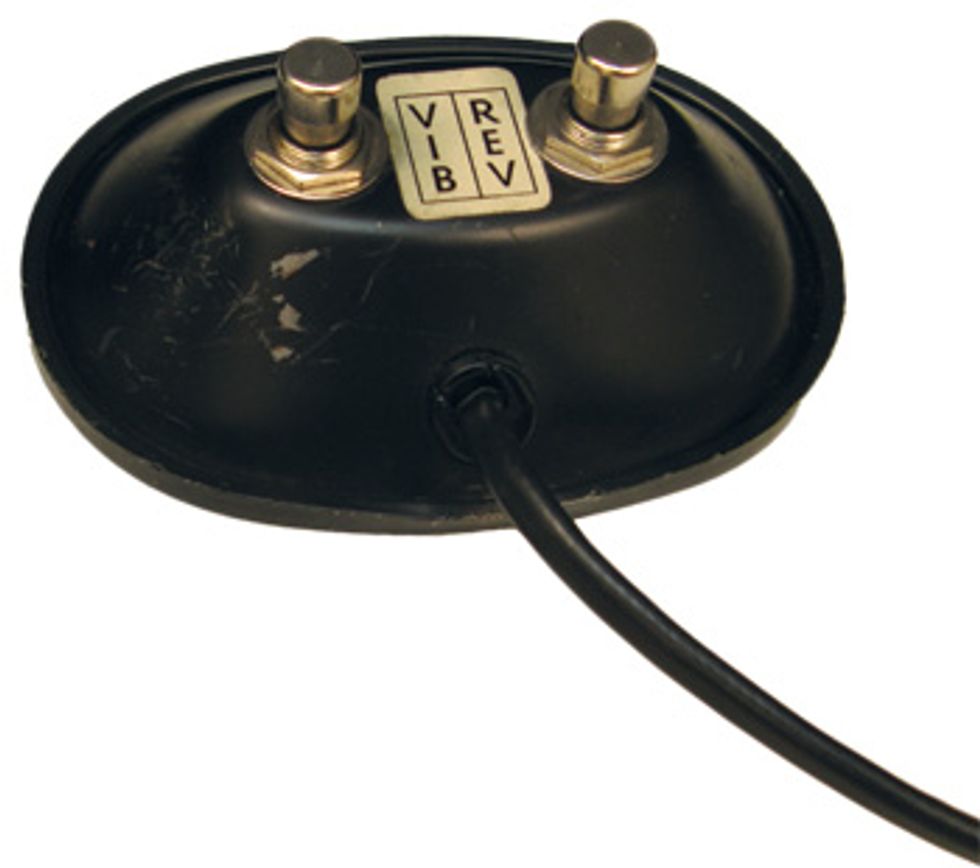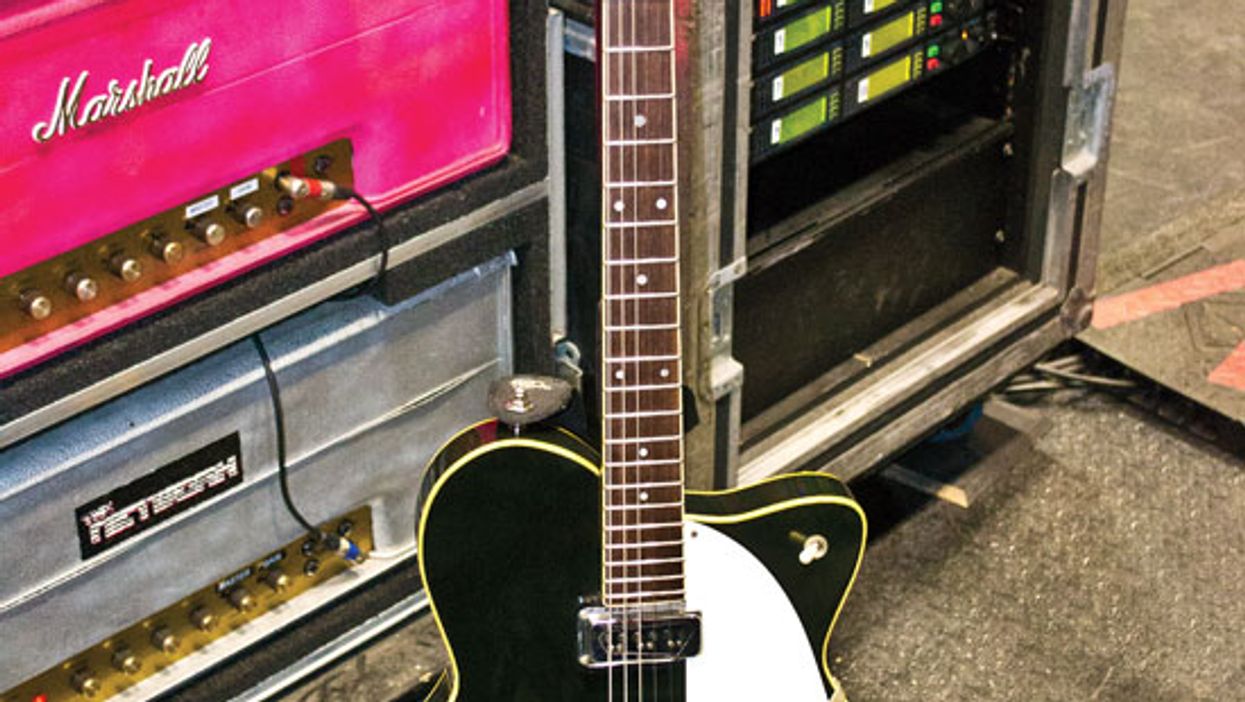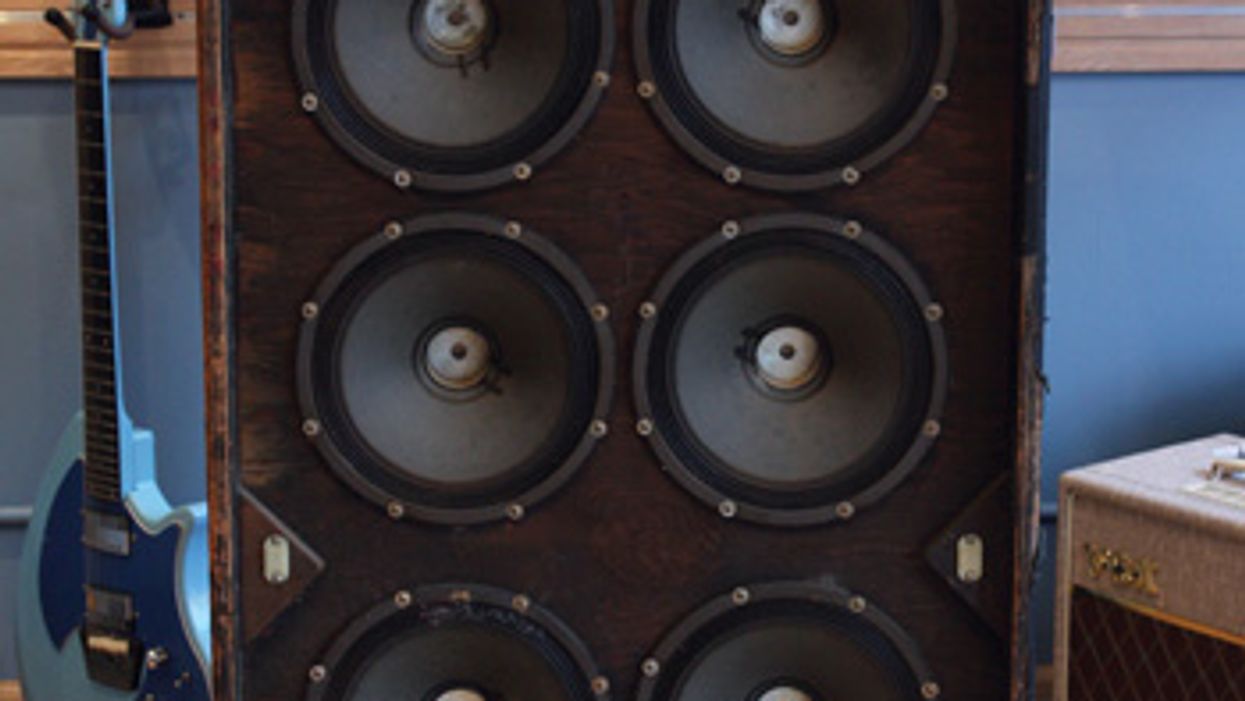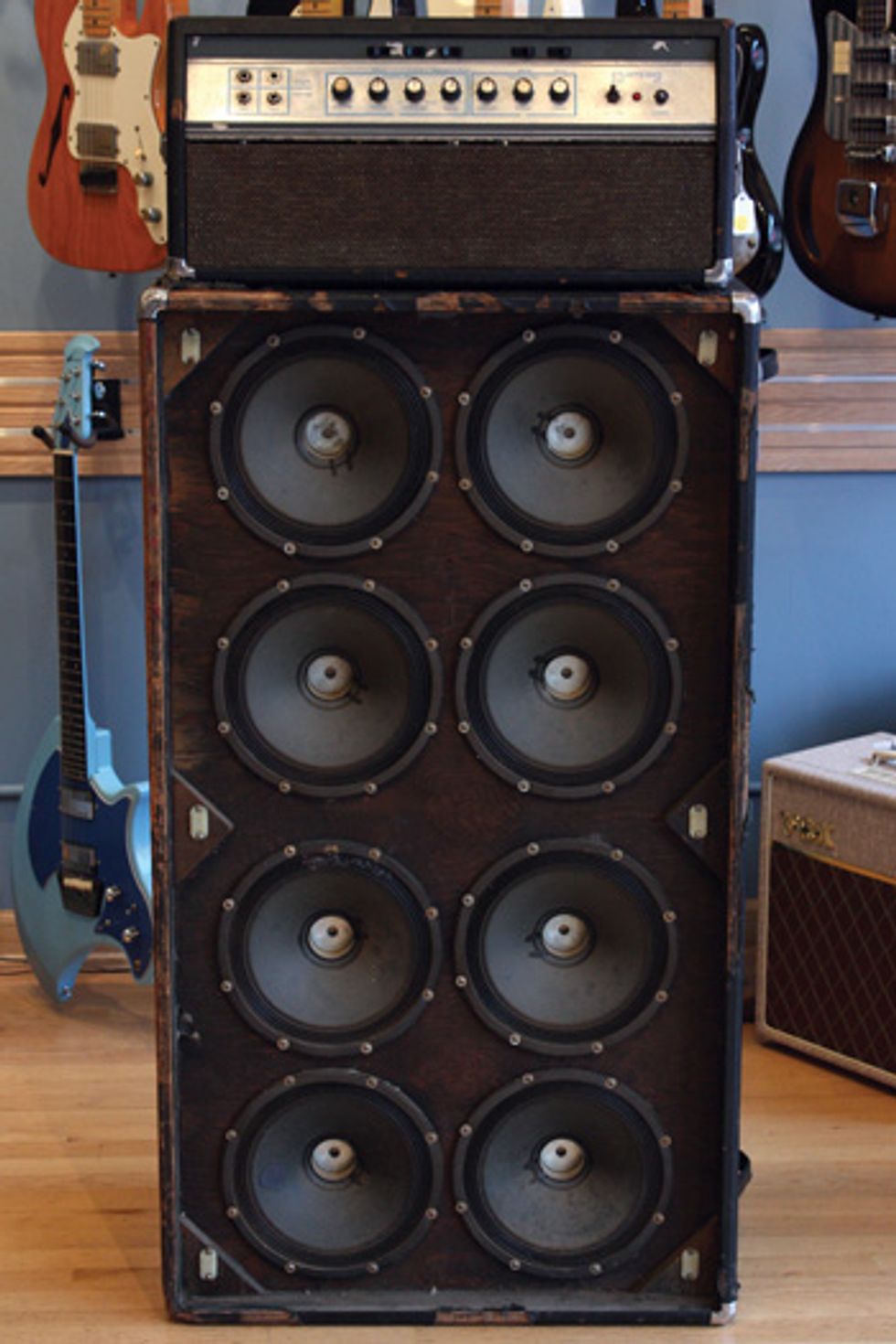Messenger guitars were built in Astoria, OR in 1967 and 1968 by the San Francisco-based Musicraft, Inc, and were the first to feature a magnesium-aluminum alloy neck—a design that preceded those of Travis Bean and Veleno guitars by some seven years. The unusual neck extends as one piece from the peghead through the instrument’s hollow body, bolting on at the neck-body joint and endpin. The neck is removable and forms a tuning forklike structure that was actually tuned to ring A440, which was believed to lend to the resonance of the instrument. This morning sunburst hollowbody Messenger is loaded with D’Armond single-coils that are said to buzz and hiss like a banshee, yet can provide a balanced, acoustic-like clean tone.
The guitar also features two ahead-of-the-curve appointments for 1967: stereo output and a built-in fuzztone circuit. There are two outputs and the switching system allows for routing both pickups through one output jack or sending them to each jack separately to be hooked up to two separate amps. The fuzztone circuit was referred to as the “Tone Messer.” It gave a large signal boost and an incredibly ratty distortion. Indeed, the guitar would vibrate wildly when the “Tone Messer” was employed, and the hollow body would break into controlled (usually), endless feedback. The best known player of Messenger guitars was Mark Farner of Grand Funk Railroad. Farner used the “Tone Messer” circuit often on solos. He would stuff the hollow body with foam rubber and tape over the “Cats eye” sound holes with duct tape to control the feedback the guitar produced with his cranked West Fillmore amplifiers and JBLD150 15" speakers.
JBLD150 15" speakers.
A special thanks to PG contributor Ken Settle for providing the photography and backstory on this Messenger guitar.
The guitar also features two ahead-of-the-curve appointments for 1967: stereo output and a built-in fuzztone circuit. There are two outputs and the switching system allows for routing both pickups through one output jack or sending them to each jack separately to be hooked up to two separate amps. The fuzztone circuit was referred to as the “Tone Messer.” It gave a large signal boost and an incredibly ratty distortion. Indeed, the guitar would vibrate wildly when the “Tone Messer” was employed, and the hollow body would break into controlled (usually), endless feedback. The best known player of Messenger guitars was Mark Farner of Grand Funk Railroad. Farner used the “Tone Messer” circuit often on solos. He would stuff the hollow body with foam rubber and tape over the “Cats eye” sound holes with duct tape to control the feedback the guitar produced with his cranked West Fillmore amplifiers and
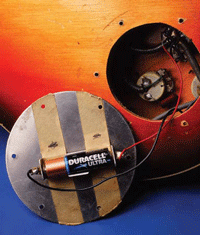 JBLD150 15" speakers.
JBLD150 15" speakers. A special thanks to PG contributor Ken Settle for providing the photography and backstory on this Messenger guitar.







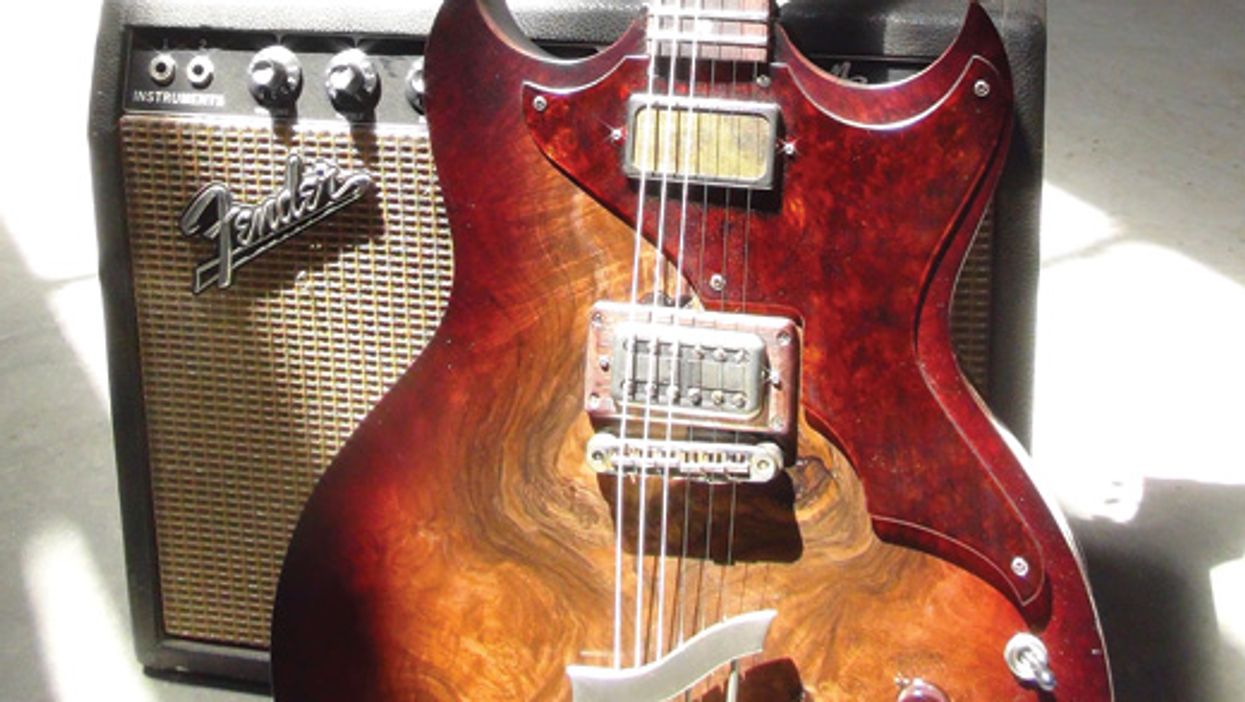



![Rig Rundown: Russian Circles’ Mike Sullivan [2025]](https://www.premierguitar.com/media-library/youtube.jpg?id=62303631&width=1245&height=700&quality=70&coordinates=0%2C0%2C0%2C0)


